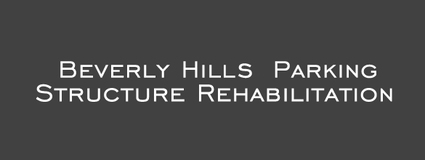As structural engineers, we are often asked what it is that we actually do.
The current state of structural engineering analysis consists of selecting forces to be applied to a structure and designing the structural elements to resist these loads. These forces commonly include dead loads, live loads, earth pressure loads, wind loads and seismic loads. Sometimes other forces must be examined including loads due to settlement, creep, shinkage, and temperature fluctuations.
Dead loads consist of the weight of a structure or structural element. Live loads are defined as the transient forces to which a building may be subjected. The Building Code specifies live load requirements for different types of buildings. The Building Code also specifies forces for earth pressures, wind, flood, and seismic (earthquake) loads.
Once the forces to which a building will be subjected are determined, the engineer designs each element based on the capacity of the materials used. Manmade substances such as steel, concrete, and masonry have much more uniform properties than those produced by nature such as wood, soil, or building stone. As such, the reliability of manmade materials is higher than those used for naturally produced materials. The elements are then verified to conform to the movements and deflections allowed by the Building Code. Up-sizing or stiffening of the elements may be required to meet the Code defined limitations. For this reason, it is generally a conservative assumption to use minimum strength and stiffness values when evaluating and designing the material elements.
Performance-based structural design represents a paradigm shift for structural engineering analysis and design. The design procedure progresses in reverse order to what is described above as the “normal” design process. This method of analysis begins by specifying how we would like the building system or component to perform. This means that we start with a “target” movement or building drift, and based on the material flexibility, we work backwards to determine the applied forces. In this case, a conservative assumption as to the materials strength and stiffness will produce non-conservative results. For this reason, it is usual to perform in-depth investigation of the structural materials; especially when the building already exists and its materials are old or archaic.
Subsequently, the structure is analyzed utilizing what is commonly called a “push-over “ procedure. Using this nonlinear analysis, the weak “links” of the structural system are identified in order of the weakest to strongest element. As each weak element fails, the remaining seismic forces are redistributed to those members that have not failed. Upon the failure of enough elements, however, a collapse mechanism is developed. This final capacity of the structure is then compared to the site specific demand. If the capacity is greater than the demand, then no additional work is required. If the capacity is less than the demand, then strengthening of selected elements will be required to increase the capacity to the demand level.
The object of this expanded structural analysis is to limit the amount of construction work required to bring the building up to a prescribed performance level. This is accomplished by repairing or enhancing only those elements that may fall below a certain seismic threshold. Of course, the engineering work described above is a simplified version of a very complex process. A non-linear, push-over analysis represents the “state-of-the-art” in structural engineering services and involves in-depth computer modeling.
The current state of structural engineering analysis consists of selecting forces to be applied to a structure and designing the structural elements to resist these loads. These forces commonly include dead loads, live loads, earth pressure loads, wind loads and seismic loads. Sometimes other forces must be examined including loads due to settlement, creep, shinkage, and temperature fluctuations.
Dead loads consist of the weight of a structure or structural element. Live loads are defined as the transient forces to which a building may be subjected. The Building Code specifies live load requirements for different types of buildings. The Building Code also specifies forces for earth pressures, wind, flood, and seismic (earthquake) loads.
Once the forces to which a building will be subjected are determined, the engineer designs each element based on the capacity of the materials used. Manmade substances such as steel, concrete, and masonry have much more uniform properties than those produced by nature such as wood, soil, or building stone. As such, the reliability of manmade materials is higher than those used for naturally produced materials. The elements are then verified to conform to the movements and deflections allowed by the Building Code. Up-sizing or stiffening of the elements may be required to meet the Code defined limitations. For this reason, it is generally a conservative assumption to use minimum strength and stiffness values when evaluating and designing the material elements.
Performance-based structural design represents a paradigm shift for structural engineering analysis and design. The design procedure progresses in reverse order to what is described above as the “normal” design process. This method of analysis begins by specifying how we would like the building system or component to perform. This means that we start with a “target” movement or building drift, and based on the material flexibility, we work backwards to determine the applied forces. In this case, a conservative assumption as to the materials strength and stiffness will produce non-conservative results. For this reason, it is usual to perform in-depth investigation of the structural materials; especially when the building already exists and its materials are old or archaic.
Subsequently, the structure is analyzed utilizing what is commonly called a “push-over “ procedure. Using this nonlinear analysis, the weak “links” of the structural system are identified in order of the weakest to strongest element. As each weak element fails, the remaining seismic forces are redistributed to those members that have not failed. Upon the failure of enough elements, however, a collapse mechanism is developed. This final capacity of the structure is then compared to the site specific demand. If the capacity is greater than the demand, then no additional work is required. If the capacity is less than the demand, then strengthening of selected elements will be required to increase the capacity to the demand level.
The object of this expanded structural analysis is to limit the amount of construction work required to bring the building up to a prescribed performance level. This is accomplished by repairing or enhancing only those elements that may fall below a certain seismic threshold. Of course, the engineering work described above is a simplified version of a very complex process. A non-linear, push-over analysis represents the “state-of-the-art” in structural engineering services and involves in-depth computer modeling.




